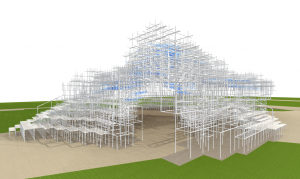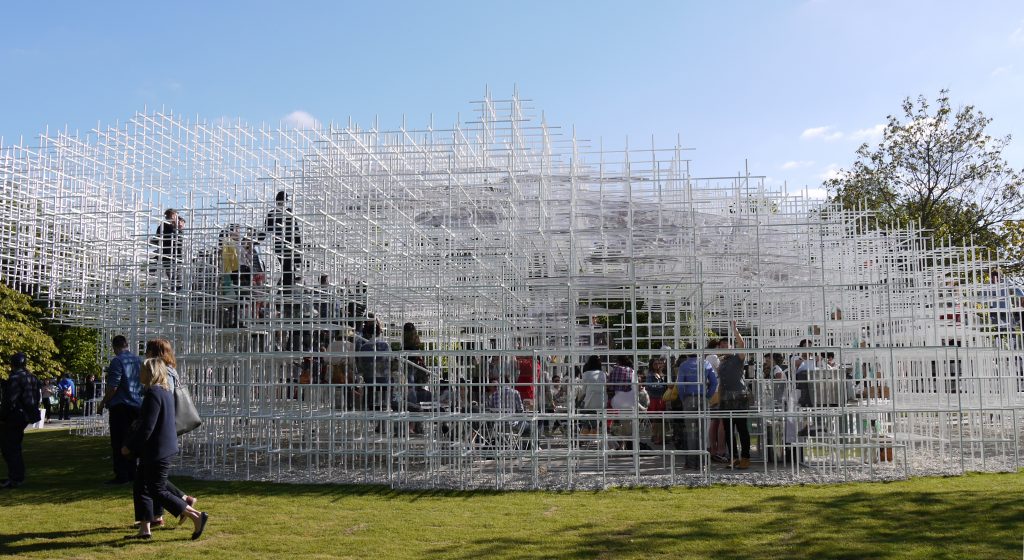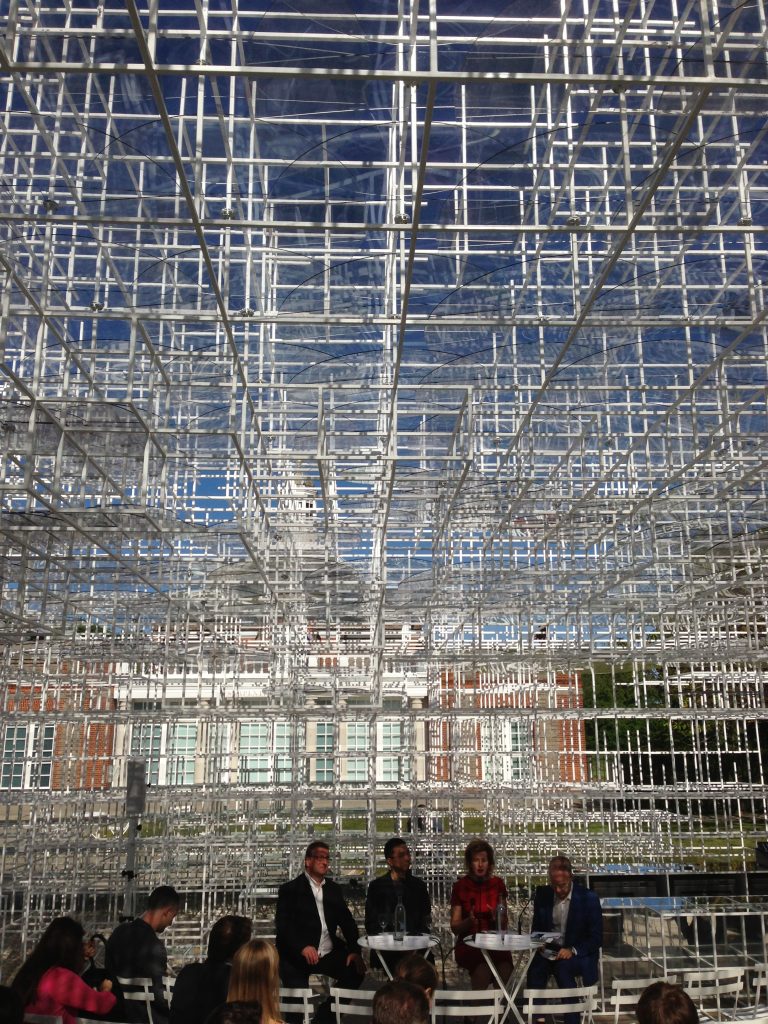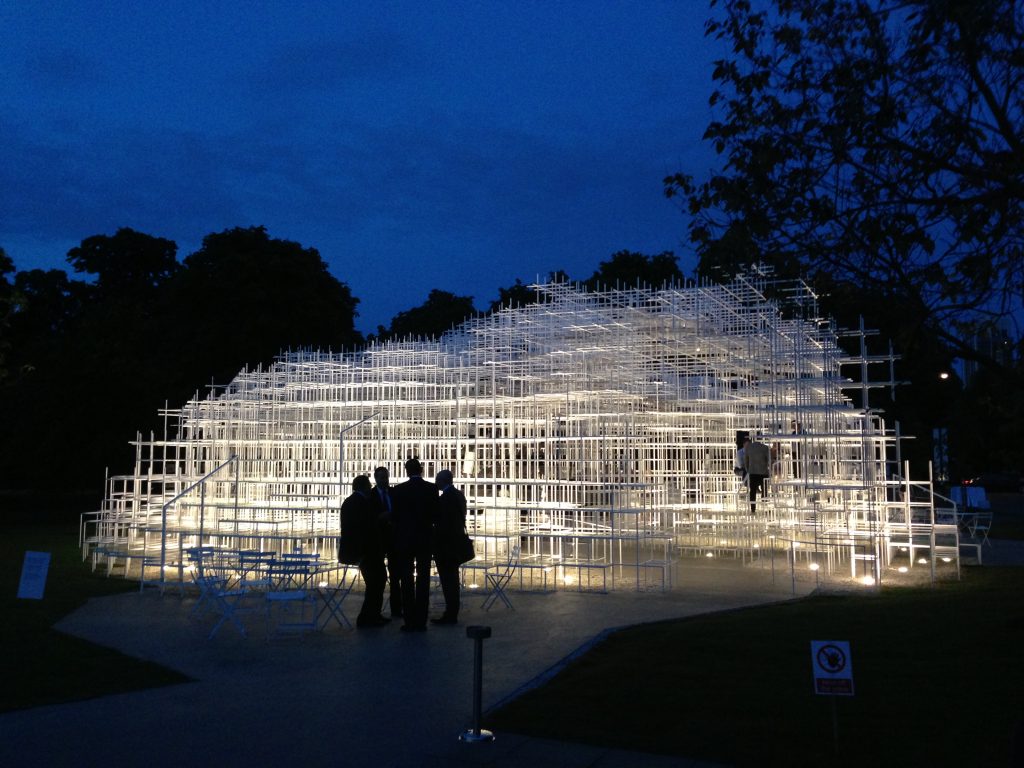Serpentine Pavilion 2013
| The Project | Each year, the Serpentine Gallery commissions an international architect to design their summer pavilion. The 2013 Pavilion was designed by Japanese architect, Sou Fujimoto, and AECOM were appointed to carry out the structural design from concept stage in January 2013 to completion in time for the press launch on 31st May 2013. The Pavilion exemplifies contemporary architecture and the engineering challenge is to mask the complexity of the structure behind simple design and intelligent detailing.Each pavilion is intended to be an example of contemporary architecture and cutting edge engineering which aims to inspire and intrigue everyone who has the opportunity to visit the venue during its four month lifespan. The 2013 Pavilion was no exception – the structure was a vierendeel space frame constructed from members with almost negligible moment capacity. The design and fabrication of this structure had to be completed within four months, adding additional pressure to the design and fabrication teams.
Whilst at AECOM, Harriet was the lead structural engineer for the project, and was later awarded the Institution of Structural Engineers’ Young Structural Engineer of the Year Award for her work. |
|---|
| The issues | The architect’s initial concept for the structure was a very regular structure based around a 400mm cube module constructed from 12mm stainless steel rods, joined at each corner. The cubes were stacked up, connected and asked to arch across the interior space.Initial issues with the structure needed to be dealt with quickly; with design commencing in January, followed swiftly by the planning submission, and then fabrication beginning in March to ensure construction could be completed in the six week period on site prior to the press launch on 31st May 2013.
The architectural scheme was adjusted to use an 800mm primary module which would be subdivided into 400mm modules where required structurally and to preserve the architectural intent of the building. Solid stainless steel rods were exchanged for mild steel tubes and the size was chosen to be 20x20mm cold rolled structural steel sections. This decision was led by two factors – structural capacity and availability of the sections in a sufficient quantity. These changes solved all of the initial concerns – man access into an 800mm module was possible, the number of members and nodes was reduced significantly and the moment capacity of the section was more than doubled (though only 0.24kNm!). |
|---|---|
| Fabrication | From the outset it was clear that the success of the scheme relied on the detailing of the nodes which formed the connection between each of the members – they needed to be simple to fabricate, easy to construct and allow as much offsite construction as possible.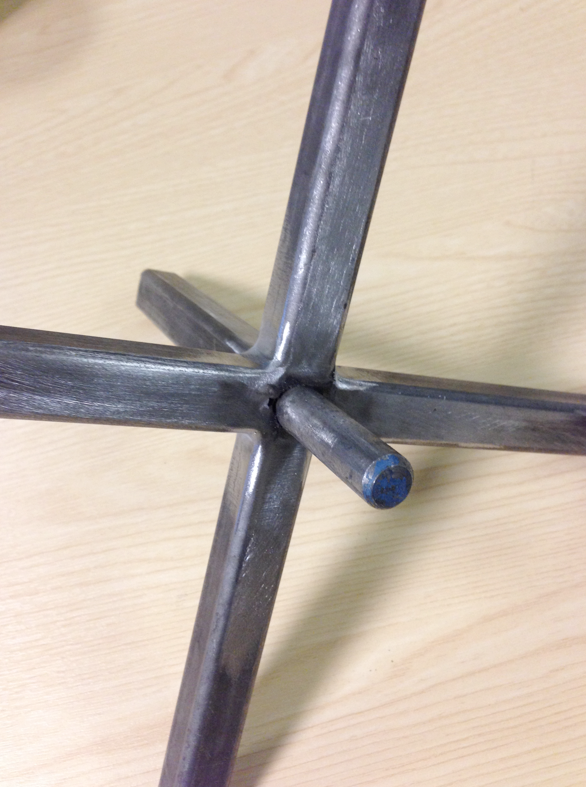
After several iterations of the joint design the solution was chosen to involve a simple halving joint to connect two members into a cross shape, with an additional hole drilled through both members to allow a solid steel rod to be welded in place where the adjoining members could later be fixed. The advantage of this solution was that it allowed for continuity of the members in all three directions, allowing a moment to be transferred across the joint. This was fundamental to the stability of the structure, so load testing was carried out in order to test the moment capacity of the sections. The pavilion’s superstructure was split into different modules to allow each one to be fabricated in a controlled factory environment, delivered to site, and erected within the time available. |
| Design process | The success of the scheme relied upon electronic collaboration between the design team members. From the outset of the project the design concept was conveyed using 3D models, as the complex structure has very little meaning when expressed in two dimensional plans or sections. The architectural scheme was drawn up using Rhino and then engineering analysis was carried out using Scia Engineer. Bespoke scripts were to transfer the geometry between the two packages in both directions. Fundamental to the success was the ability to make this a complete round trip process, allowing rapid design development with the architect and iteration of the design to a final solution which embodied the architect’s dream as well as functioning structurally.The 3D model was also shared with the fabricator allowing integration with their computer aided manufacturing processes, as well as better visualisation of the structure and optimisation of the size of the fabrication modules for delivery to site and erection within the short construction period on site. |
| Construction | |
| Photos | 
|
| Software | Rhino |
| Grasshopper | |
| Scia Engineer | |
| Microsoft Excel | |
| The team | Architect: Sou Fujimoto |
| Technical Advisor: AECOM | |
| Project management: Rise | |
| Contractor: Stage One | |
| Contact us for more information. | |
